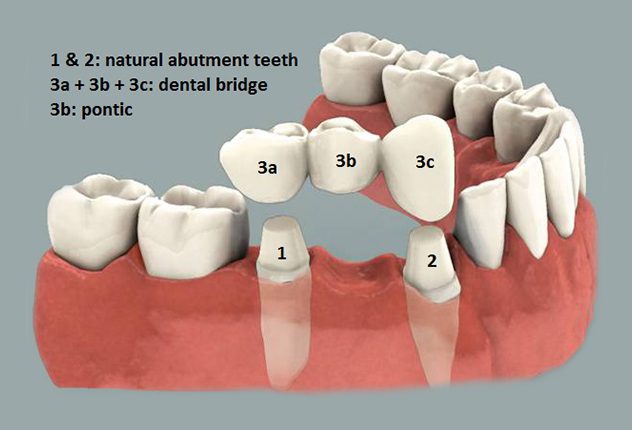A.K.A. BRIDGE VS. IMPLANT
OH, SNAP!..SO YOU LOST THAT TOOTH.
It doesn’t help that it was one of the front ones. The most common ways to replace a missing tooth include both the Dental Bridge and the Dental Implant. Below are the pros and cons of each.
THE DENTAL BRIDGE
The tooth supported bridge uses the 2 surrounding teeth (abutments) to support a 3 crown piece with a fake tooth in the middle (the pontic).
| The Pros | The Cons |
| • Finished 2-4 weeks after extraction | • Cannot floss between |
| • Fixes surrounding teeth if fractured | • Alters the surrounding teeth that may be healthy |
| • Nonsurgical | • Abutments may need root canals |
| • Can disguise ridge abnormalities | • Teeth may look too large if prior teeth had natural spaces |
| • Less expensive than implant therapy | • If and abutment tooth is lost so is the bridge |
| • Permanently cemented | • Must have teeth on each side of the missing tooth |
THE DENTAL IMPLANT
A fixture is placed into the bone and a crown is then built on top of the implant.
| The Pros | The Cons |
| • Replaces single tooth and root | • Does not address condition of surrounding teeth |
| • Surgery is generally painless | • Depends on healing and on the patient’s health risks |
| • Can floss regularly | • Requires a certain x-ray |
| • Tooth appears to be coming right out of the gum | • Cannot hide extensive bone loss and bony defects |
| • Can absorb biting foces | • Cost for implant is separate from the cost of restoration |
| • If cared for, should last a lifetime | • Can be lost to periimplantitis |
| • Don’t have to be numb for restoring | • Treatment time is about six months |




